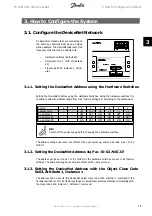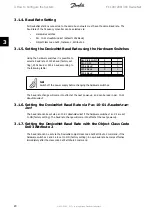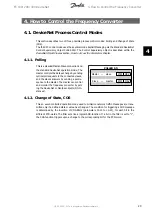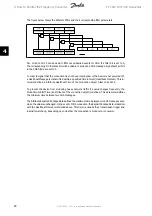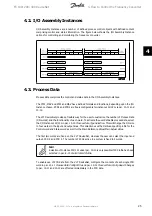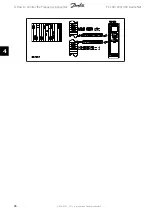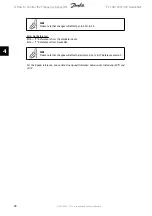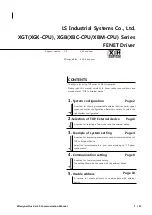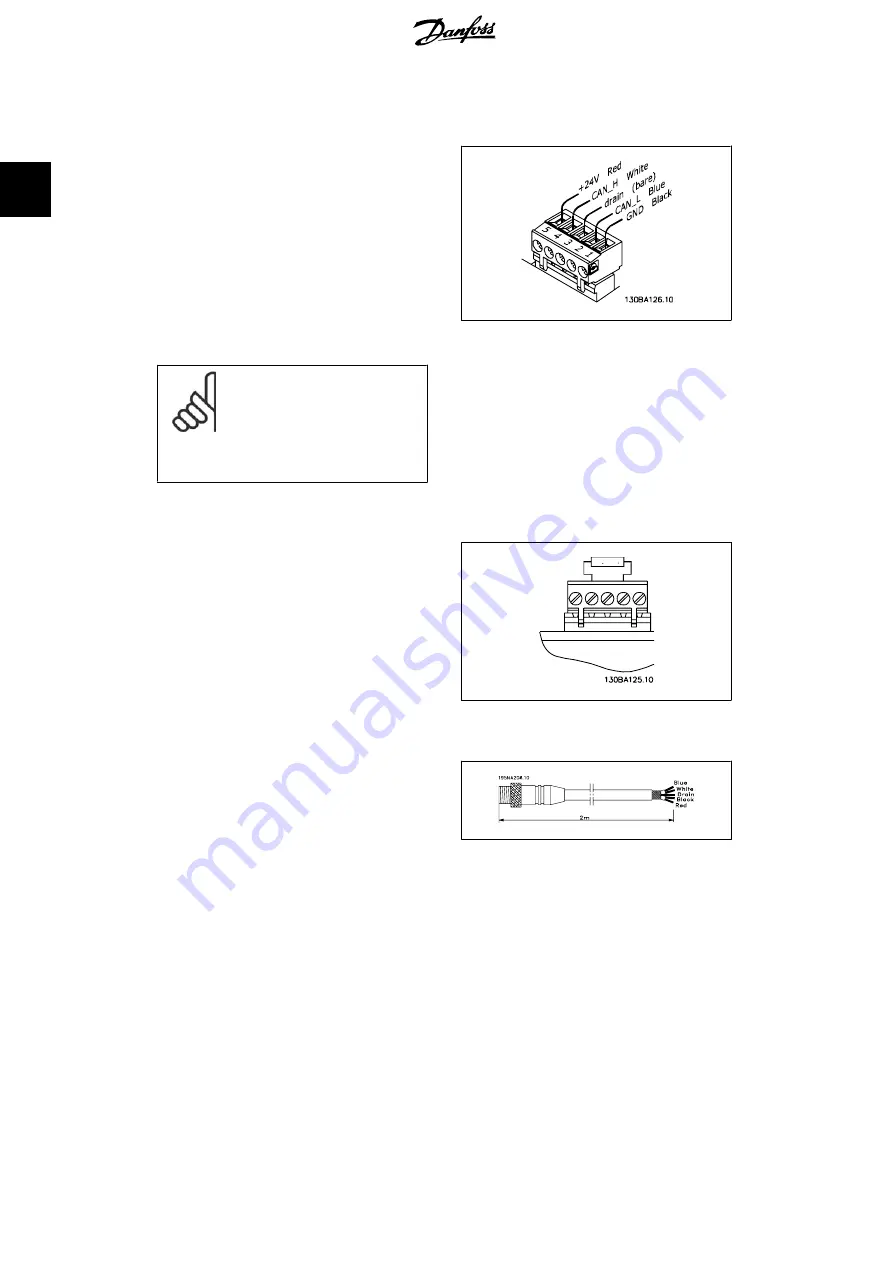
2.1.7. DeviceNet Connection
It is essential to terminate the bus line prop-
erly. A mismatch of impedance may result in
reflections on the line that will corrupt data
transmission. The DeviceNet control card is
provided with a plug-cable connector. When a
plug connector is used as a splice between
two trunk lines, the removal of devices will not
sever the network. If required, strain relief
must be provided by the developer. In current
installations of this type of connector, the
strain relief is attached to the product.
NB!
Install wires only when the net-
work is inactive. This will pre-
vent problems such as shorting
the network supply or disrupting
communications.
2.1.8. DeviceNet Termination
Termination resistors should be installed at
each end of the bus line. The resistors must
be mounted between terminal 2 (CAN_L) and
terminal 4 (CAN_H) and should have the fol-
lowing specification:
121 Ohm, 1 % Metal film, 1/4 Watt
2.1.9. Drop Cable
An alternative to splicing two trunk lines in the
connector on the control card is to use a De-
viceNet connection box or a T-connector. For
this kind of installation a drop cable is availa-
ble as an option.
Drop cable order number: 195N3113
The connector is a micro-style, male, with ro-
tating coupling nut, and fits into a Micro De-
vice port.
2.1.10. Network Power Consumption
The DeviceNet option is powered via the internal power supply in the drive. The network voltage
(+24 V) is detected only to determine if the bus is energized or not, thus the current draw from
the network is negligible.
2. How to Install
FC 100/ 200/ 300 DeviceNet
16
MG.33.D3.02 - VLT
®
is a registered Danfoss trademark
2


















